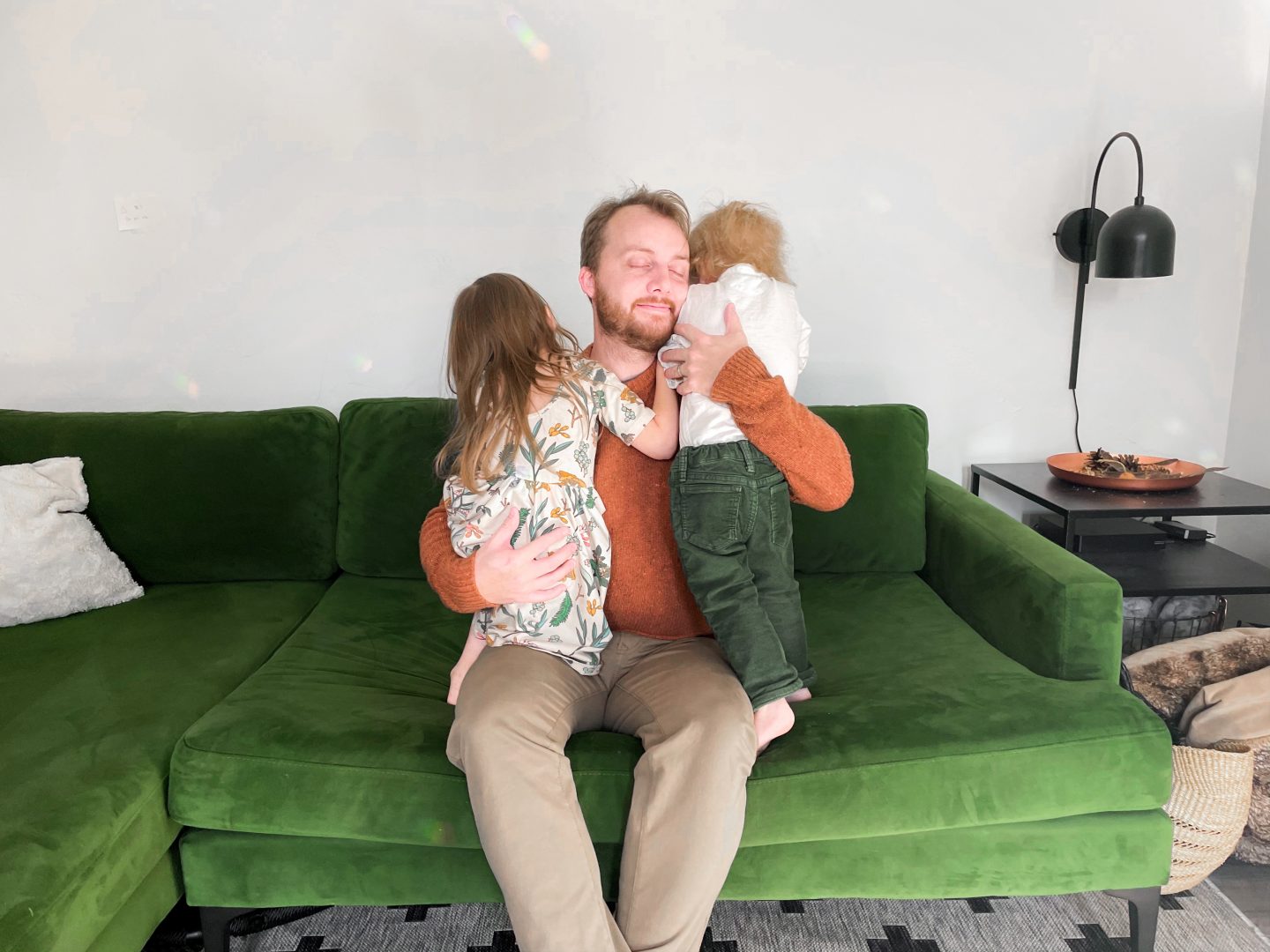I’ve been tasked by Lindsay to write a short entry about my experiences with attachment parenting from the dad’s perspective. I don’t consider myself an expert on this topic––mostly I’ve let Lindsay take the lead to gather parenting resources and have been willing to learn from what she has discovered. This has worked out because I trust that she’s a smart person who wants what is best for the kids, but I still check what she tells me against my own values. Luckily, almost everything that she’s decided she wanted to do has been ok with me, so this system has worked out.
Anyway, here are some of my experiences with various attachment parenting practices and how to deal with them.

Cosleeping. Cosleeping started out fairly simple. We were going to put a side crib by our bed so that our daughter would always be near us. This turned into our daughter is always in our bed, which turned into both our kids are always in our bed. When our second was born I spent a decent amount of time building a “house bed” for our daughter to sleep in (essentially the toddler bed version of a side sleeper). She still sleeps in our bed. There are two problems that come from this arrangement: sex and space. For sex, we just use any other surface in the house that doesn’t hurt Lindsay’s back. For space, we bought a king sized bed. Simple.
Equal Partners. Lindsay has been adamant that we be equal partners in this parenting thing. I agreed to this because I knew that if I wanted to have attachment with my child I’d need to actually care for them, and also to do otherwise would be ridiculous in this day and age. It was still a bit of an adjustment for me because my male role model, my father, did the exact opposite of this. While I always knew that I wanted to do more than finishing work and watching replays of college football games on the local PBS channel, that feeling didn’t necessarily have much concrete meaning. In the end, the system we’ve come to is basically a separation of duties. Mine are primarily sanitation and waste management, while hers are nutrition and executive management.
Play. Something that is important to my attachment with my kids is to engage in play with them. This is actually quite easy, as most of the time they really just wanna run around or be tickled. Sometimes they wanna throw or juggle a ball. Very rarely do I have to take part in the kind of imaginative role playing that is kind of difficult for me. If you’re feeling even less like playing, there are many “lie down games” that you can try. My favorites are “I’m a mountain, drive your cars on me,” “don’t get too close, I’m an alligator,” and the classic “doctor” (or sometimes “chiropractor”. This one involves them walking up and down my back while I lie on my face while filled with the existential dread that only millennials will ever truly understand).
Another part of attachment parenting is how to deal with your child’s emotions, especially when they are difficult. Here are some of the key strategies I employ.
Redirecting. Sometimes your kid is headed straight for a brick wall of conflict or is otherwise in a difficult state. For example, they might want to walk right next to the edge of a path that descends sharply into a swift river, and if you ask them to move away, they become belligerent. Rather than directly confronting their emotions and forcing them to bend to your will (this isn’t really a good outcome; it makes them resentful and harms your attached relationship), you can instead redirect them to something else. For this example, perhaps point out something interesting farther from the river like a cool rock, or a red leaf, or pretend there’s a leprechaun in the woods or literally anything.
Validation. Another useful strategy is to validate first. What this means is that you let the child know that their feelings are legitimate even if you want them to do something different from what they’re doing. From my previous example, you could say that you know that the river is interesting, but you want them to move away. Usually this will still need to be followed up with redirecting, but they’ll know that you’re on their side.
Be there through big emotions. The last thing is one of the things that is hardest to do, which is when none of the strategies work and the kid just is going to have a good heckin’ scream. When this happens, what you have to do is stay with your child and non-judgmentally support them through managing their feelings. This usually just looks like a lot of validation while they lose their crap. “I know, it’s so hard not to stand right next to the river” kind of thing. It’s tempting to throw sass in about how “it’s hard to avoid drowning yourself”, but it’s best to avoid that, because while it is funny and does help you deal with their screaming, it probably isn’t great for them and your attachment.

And those are pretty much all the thoughts I have about attachment parenting right now. Lindsay has a lot more great information elsewhere that will probably be more helpful, but if you want some male perspective, there’s some for you.



